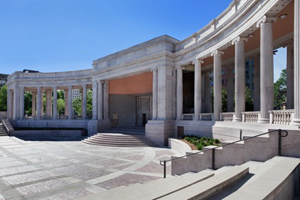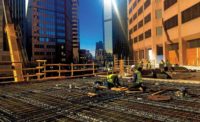U.S. Secretary of the Interior Ken Salazar designated Denver’s Civic Center as a National Historic Landmark on Oct. 17, making it the City and County of Denver's first NHL and one of two civic centers in the country to achieve the prestigious recognition, according to Historic Denver Inc., the Denver nonprofit that submitted the NHL nomination.

Celebrations to honor this historic moment will take place in Denver’s Civic Center in 2013.
The National Park Service, which administers the NHL program, defines National Historic Landmarks as “nationally significant historic places designated by the Secretary of the Interior because they possess exceptional value or quality in illustrating or interpreting the heritage of the United States.”
Presently, NHLs comprise less than 3% of all properties listed in the National Register of Historic Places. San Francisco’s Civic Center is the only other location of this type currently recognized as an NHL.
The NHL designation extends from the State Capitol on the east side of Broadway to the Denver City and County Building on the west side of Bannock. State properties included within the boundary are: the State Capitol and its grounds; the State Office Building (northeast corner of Colfax and Sherman); the “Colorado State Museum” building (southeast corner of East 14th and Sherman, which is now used as an office and meeting annex for the Capitol); Lincoln Park and Veterans Park.
City properties included are: Civic Center Park, the McNichols Building (Carnegie Library), the Greek Amphitheater, Voorhies Memorial, the Pioneer Monument, and the City and County Building (14th and Bannock).
Civic Center joins a list of some of the most iconic, treasured and historically significant spaces in the United States. NHL designation places Civic Center alongside such sites as the Empire State Building, the Alamo and the Library of Congress.
“As one of the premier civic and cultural gathering places in the Rocky Mountain region, the Denver Civic Center is more than worthy of this designation. It has played host to historic and momentous events, served as a gathering place in times of collective sorrow and provides a home to annual celebrations,” said Sen. Michael Bennet (D-Colo.), whose support of the designation included a letter to National Park System Advisory Board Landmarks Committee. “The designation would not have been possible without strong support and extraordinary efforts from the local community.”
“Colorado is blessed with rich history, heritage, natural wonders and architecture including Civic Center,” said Colorado Gov. John Hickenlooper. “We are honored that Civic Center received this national recognition. If the visionaries who imagined how great the West would become could know that a century later their efforts have been realized with this distinction, we believe they would be very proud.”
“This is an incredibly important recognition for Civic Center and one that places the heart of our civic, business and cultural community up there with the most significant landmarks in our nation's history,” Denver Mayor Michael B. Hancock said. “Not only is this a great honor for Civic Center and our efforts to restore and memorialize the ‘city beautiful’ vision, it shines a light on Denver and its growing importance in the eyes of the entire country.”
In the early 20th century, the national “City Beautiful” movement, inspired by Chicago's 1893 World's Fair, aimed to elevate the human spirit by making communities aesthetically attractive by building parks, planting greenery, adding sidewalks and paving streets. Denver Mayor Robert Speer, elected in 1904, was an enthusiastic supporter of the City Beautiful movement, and he became the driving force behind the creation of Civic Center and other areas identified for Denver’s City Beautiful master plan.



Post a comment to this article
Report Abusive Comment